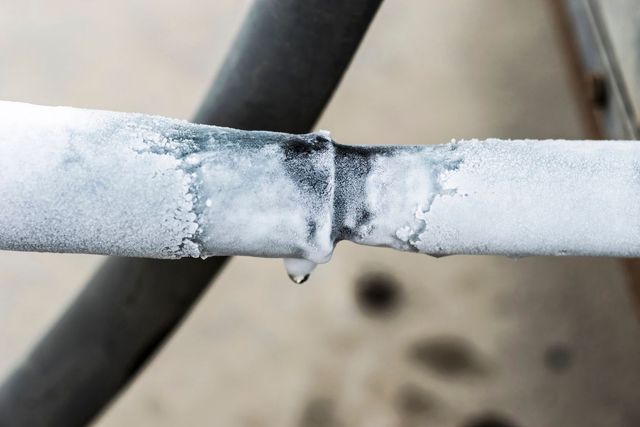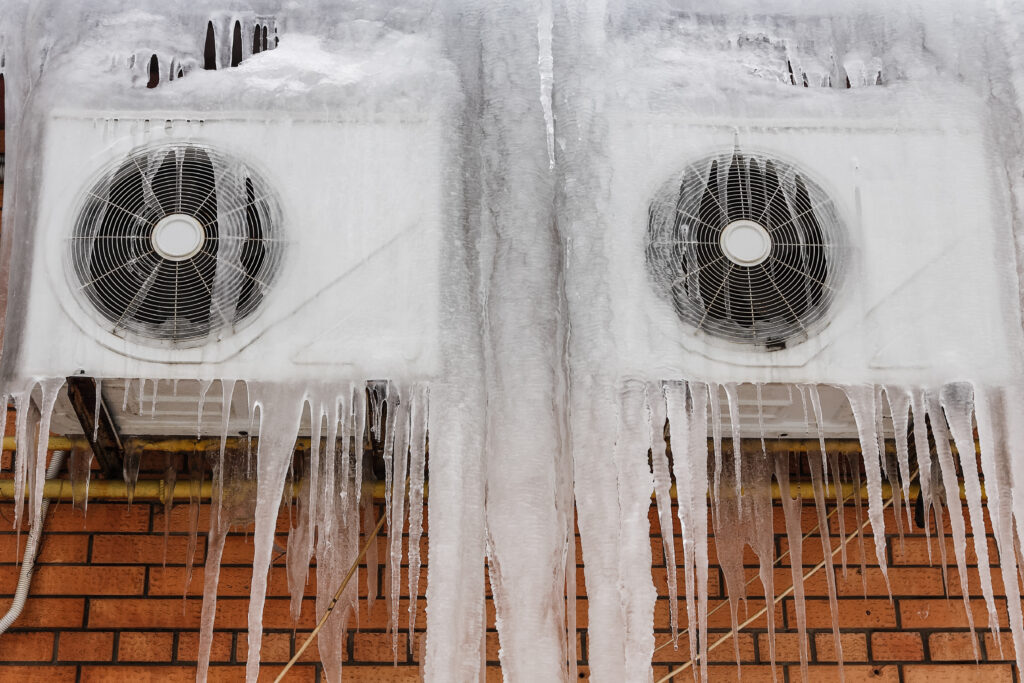We've encountered this great article involving Why Is Ice On My Outside Air Conditione listed below on the net and thought it made perfect sense to relate it with you on my blog.

Introduction
Uncovering that your a/c pipeline is frozen can be concerning, especially during warm summertime when you rely on your air conditioning unit one of the most. Comprehending what to do in such a situation is crucial to avoid further damages to your cooling system and guarantee your comfort inside your home.
Understanding the Causes
A number of factors can add to the cold of an AC pipeline. Understanding these causes can aid you deal with the concern efficiently.
Absence of Airflow
One common root cause of a frozen air conditioner pipe is inadequate air movement. When the airflow over the evaporator coil is limited, it can create the coil to drop below freezing temperature level, leading to ice formation on the pipeline.
Low Refrigerant Levels
Inadequate refrigerant levels in your air conditioner system can also lead to an icy pipe. Low cooling agent degrees can cause the pressure in the system to go down, resulting in the cold of dampness on the evaporator coil.
Cold Weather Conditions
In chillier environments, freezing temperature levels outside can contribute to the freezing of a/c pipelines. If your AC system is not appropriately shielded or if there are leakages in the ductwork, cool air can penetrate the system, creating the pipe to ice up.
Dirty Air Filters
Unclean or blocked air filters can limit airflow in your air conditioner system, causing various problems, consisting of an icy pipeline. It's vital to change or clean your air filters routinely to guarantee proper airflow and protect against ice build-up.
Indications of a Frozen Air Conditioning Pipe
Acknowledging the indications of a frozen air conditioner pipeline is important for timely action.
Lowered Airflow
If you see a considerable decrease in airflow from your vents, it could show a frozen pipe.
Ice Buildup on the Pipe
Noticeable ice accumulation on the refrigerant line or the evaporator coil is a clear sign of a frozen AC pipeline.
Unusual Sounds from the Unit
Unusual sounds, such as hissing or gurgling, coming from your air conditioner system can signal that there's ice existing on the pipe.
Immediate Actions to Take
When confronted with an icy AC pipeline, it's important to act rapidly to stop additional damage to your air conditioning system.
Turning off the air conditioner
The primary step is to turn off your air conditioner to avoid the system from running and intensifying the concern.
Checking for Blockages
Evaluate the area around the interior unit for any kind of obstructions that might be blocking air flow, such as furniture or drapes.
Defrosting the Pipe
You can utilize gentle methods like putting towels soaked in warm water around the frozen pipe to help thaw it slowly.
Preventive Measures
Taking preventive measures can aid stay clear of future events of an icy air conditioning pipe.
When DIY Methods Fail
If your attempts to thaw the pipeline or address various other issues are unsuccessful, it's time to call a specialist.
Value of Hiring a Professional HVAC Technician
A licensed HVAC technician has the experience and tools needed to detect and repair issues with your a/c system securely and effectively.
Routine Maintenance Checks
Set up normal maintenance contact a professional HVAC specialist to make sure that your air conditioner system is running efficiently.
Changing Air Filters
Frequently change or cleanse your air filters to stop airflow restrictions and preserve optimum efficiency.
Shielding Exposed Pipes
If your AC pipes are exposed to chilly temperatures, think about protecting them to stop freezing throughout winter season.
Seeking Professional Help
If DIY methods fall short to solve the problem or if you're unsure concerning just how to continue, it's best to look for support from a certified HVAC specialist.
Verdict
Taking care of an icy a/c pipe can be an irritating experience, yet understanding how to respond can help minimize damage and bring back convenience to your home. By recognizing the reasons, recognizing the indications, and taking punctual action, you can efficiently attend to the problem and stop future occurrences.
What to Do If Your AC Line Is Frozen
Make Sure All Supply and Return Air Vents Are Open
If you notice problems with airflow, the first thing you should do is check your supply and return vents. Supply vents distribute clean, conditioned air throughout your home. As this air becomes stale, it’s pulled into the return vent, where it’s reconditioned before being sent back out through the supply vent.
When these vents are closed, air won’t flow in the home. Before examining your AC, check the vents in every room and ensure they’re all open.
Check for a Dirty Air Filter
Another possible cause of limited airflow is a dirty air filter. Your air conditioner’s filters catch elements you don’t want to breathe in, such as dirt and dust. Over time, filters can become clogged, ultimately blocking air from flowing in and out. The lack of airflow can then cause the entire coil to freeze and will completely restrict any air from moving through it. The AC may need to be powered off for one to two days to allow the coil to thaw after replacing the filter to allow proper functioning of the unit. This debris can also accumulate on your AC’s evaporator coil, requiring a more serious repair. In general, air filters should be cleaned regularly (about every two weeks).
Assess Your Outdoor Unit
In addition to checking your AC, assessing the outdoor unit is a good idea. Also known as the condensing unit, it works with your interior unit to release heat outside. An issue with the outdoor unit can result in rising internal temperatures.
Overgrown Shrubs or Clogged Leaves
From leaves and twigs to shrubs and debris, there’s no shortage of outdoor elements that can accumulate around your condensing unit. When these elements get lodged inside the unit, they can block airflow. Fortunately, removing the blockage can solve the problem.
Sounds of a Broken Fan
Shrubs and leaves aren’t the only things that can impede your outdoor unit’s airflow. If the fan is broken, the unit won’t be able to properly get rid of heat — which means the internal temperature won’t go down. First, make sure the fan is spinning. If it is, check for the following sounds of a broken fan:
Buzzing Rattling Screeching Hissing Clicking Preventative Measures
Nobody wants to deal with a frozen AC line. In addition to causing problems with your air conditioner, they require professional repairs. On the bright side, there are preventative measures you can take to help ensure this issue doesn’t arise in the first place.
https://www.coopergreenteam.com/blog/what-to-do-if-ac-line-frozen

Do you enjoy reading about Have a Frozen AC Line? Here’s How to Fix It? Create feedback further down. We would be delighted to listen to your opinions about this page. We hope to see you back again soon. In case you appreciated our article plz do not forget to share it. Many thanks for your time. Visit again soon.
Request Service